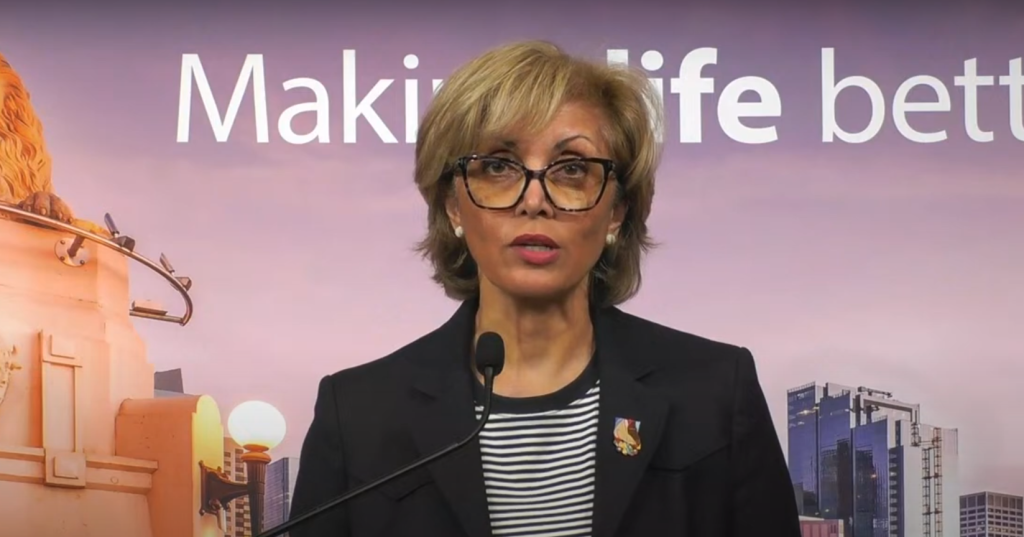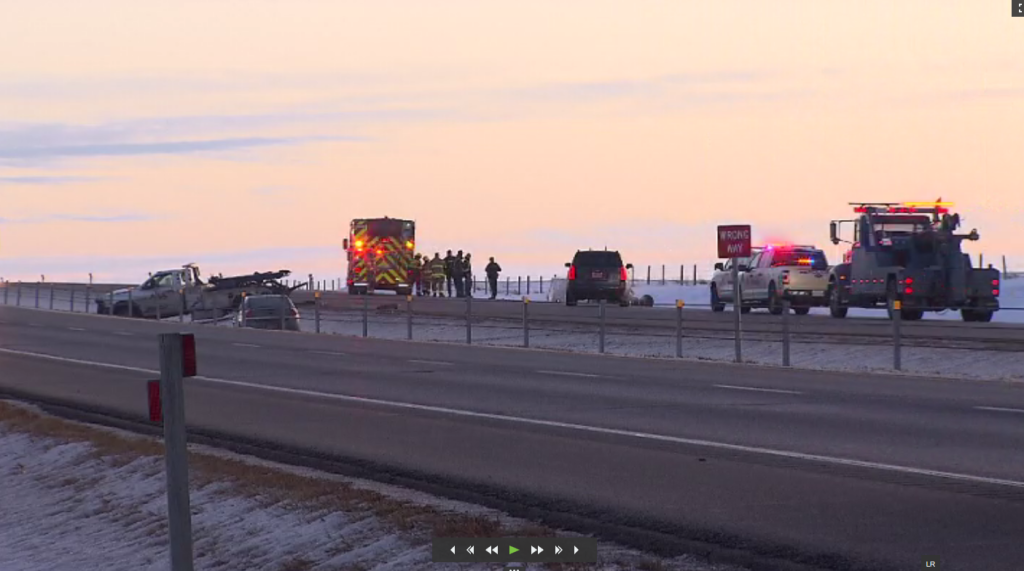City of Calgary lifts all water restrictions

Posted Sep 22, 2024 10:06 am.
Last Updated Sep 23, 2024 6:40 am.
Water restrictions were finally lifted Sunday after a long summer of repairs to a Calgary water feeder main.
The Bearspaw South Feeder Main is back in service and now functioning, Calgary Mayor Jyoti Gondek said in a news conference.
She thanked Calgarians for coming together to reduce water use, and to those involved in the repair process.
“I’d like to thank each and every person who worked on this critical maintenance project and helped ensure the safety and the security of our water system,” she said.
“I’m also grateful to all of you who understood that community action was needed in this situation, and that banding together to save water would get us through this period of water reductions and restrictions.”
She says every litre saved from reducing water use reduced pressure on the city’s water system, which helped ensure all Calgarians had “safe, treated, drinking water, reaching our homes and our businesses.”
The city expected repairs to be complete by Sep. 23, but the work was finished days earlier and the restrictions lifted ahead of schedule.
Francois Bouchart, the city’s director of capital priorities and investment, is asking Calgarians to ease into regular water use.
“You may have a mountain of laundry that you have been waiting to tackle, a pressure wash job that you’ve been holding off, or you may just want to take that extra long, guilt-free shower where possible. We would just ask you to please space these things out over the next few days that will help even out any spikes in demand, and will be easier in our system,” he said.
Calgarians may notice cloudy water or a chlorine smell in their water for a few days, but Bouchart says it’s temporary and it’s safe to drink.
The non-potable water locations that opened amid the water restrictions will close Sunday at 7 p.m.
City says upcoming repairs in Parkdale won’t create more restrictions
Bouchart says there are two smaller pipe sections to repair in October and November along Memorial Drive in Parkdale.
However, he says the work is smaller in scope and won’t require citywide restrictions because crews can isolate those sections while keeping the feeder main running.
Acoustic monitoring will be done on two sections of the feeder main along Memorial Drive that may cause “minor disruptions to the pathway system.”
He also said the city is now looking at mid-to-long-term plans for the critical infrastructure. This includes inspecting 1,000 kilometres of pipe by the end of the year, continuing that program of inspection and doing repairs at indicated locations.
Bouchart also acknowledged Calgarians know more about the water pipes than they ever thought they would, offering a heartfelt thank you for the patience of Calgarians and those in surrounding communities during the water crisis.
“I want to thank residents of Calgary, Airdrie, Chestermere, Tsuut’ina Nation, and Strathmore, for your support and patience, for doing your part to save every drop, because every drop truly counted,” he said.
“We know this has not been easy. We have asked you to make some changes to your most basic routines and made sacrifices personally so that we had enough water for the most essential uses. Thank you.”
Bouchart also thanked businesses and residents directly impacted by the repairs, particularly those in the communities of Bowness and Montgomery, saying they dealt with “reduced access to your businesses and homes, road closures and 24/7 construction.”
“These are not things that we would wish upon anyone, and we sincerely thank you for enduring these disruptions,” he said.
He says the city is engaging with businesses and residents to see how it can provide support through both the response and recovery phases of major repairs and will take these lessons learned into future infrastructure projects.
Recent repairs estimated to cost up to $20 million
David Duckworth, the City of Calgary’s chief administrative officer, says the latest repairs were better managed financially, noting this was planned work and not an emergency like the original major break in June.
He says the current estimate is being pegged at $15-20 million, despite being a much larger repair. The initial water repair to the feeder main in June is estimated at $20-25 million.
“We have been able to better manage the cost of these recent repairs, although much bigger in scope than the work that was completed in June, because they were planned rather than an emergency,” Duckworth said.
The city is expecting a detailed forensic report on the repairs at the end of October. Duckworth says the city will be able to provide more information on those findings at that time.
Another report from a consultant will provide recommendations for the city.
“Once this comprehensive report has been finalized, our teams will carefully review the recommendations to ensure we create a rehabilitation plan that takes into consideration all findings from the consultant and what we have learned over the past few months while we are navigating feeder main repairs,” Duckworth said.
Review on city’s repair process; city appeals to federal government for infrastructure funding
A third-party investigation into what caused the rupture is ongoing, Gondek said.
She says a panel of industry leaders will be finalized once a chair is appointed.
“That work, which is being done independently outside of City Hall, will provide us all with transparency and clarity on what happened, why it happened, and how we can ensure it never happens again,” she said.
“As I receive reports from these reviews, I will be sharing them with Calgarians as well as with industry leaders who can work with us to strengthen our water infrastructure.”
Gondek also spoke of collaborating with other mayors across the province and country. She wants to appeal to the federal government for “funding sources” for the security and safety of infrastructure like water networks.
“Calgary has often been a leader in energy and other innovations. Now we can take another leadership role to help our fellow Canadians in making sure that water infrastructure is safe and reliable for everyone to use,” she said.
Gondek clarified this was already in motion when the first break happened in June. At the time, the Federation of Canadian Municipalities annual conference was happening in Calgary, and she says the city presented a report to the federal government.
“So what we have done is already issued a report that outlines we need better and more consistent funding from the federal government to address our infrastructure needs, and that’s the work that we will be championing as big city mayors for every municipality in this country,” she said.
Water restrictions were first introduced after a major water feeder main break on June 5.
Stage 4 water restrictions meant Calgarians couldn’t use potable water outdoors. Anyone caught doing so was faced with a fine of $3,000.
After declaring the water emergency over and most water restrictions being lifted in July, right as the Calgary Stampede kicked off, water restrictions returned on Aug. 26. More repairs were needed after 21 more spots were noticed by a pipe diver after the initial repairs were made.
Water use on Saturday was 487 million litres, a few more than the limit of 485 million litres. The limit was raised from 450 million litres after several days.
The typical demand from both the Glenmore Water Treatment Plant and the Berarspaw Water Treatment Plant is around 600 million litres daily.








